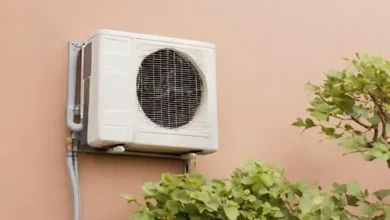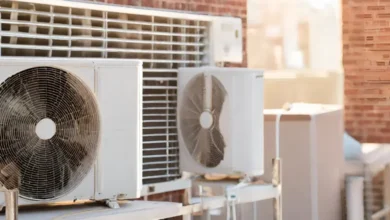Understanding SEER Ratings for Energy-Efficient AC Units

Choosing an air conditioning unit involves navigating through a myriad of technical terms, and in this landscape, SEER (Seasonal Energy Efficiency Ratio) emerges as a pivotal metric for assessing efficiency. In this detailed exploration, we will delve into the intricacies of SEER ratings, understanding their calculation, interpreting their significance, and recognizing their impact on the performance of energy-efficient AC units.
Also read: Best AC in India 2024
Understanding SEER: The Basics
SEER serves as a numerical representation of an air conditioner’s efficiency over an entire cooling season. To comprehend its significance, it’s essential to grasp the fundamental calculation. The Seasonal Energy Efficiency Ratio is determined by dividing the total cooling output of an AC unit (measured in British Thermal Units or BTUs) by the total electric energy input (measured in watt-hours) during the same period. Essentially, SEER quantifies the efficiency of an air conditioner in converting electrical energy into cooling power.
How is SEER Calculated?
The SEER formula encapsulates the efficiency of an AC unit in converting electricity into cooling power. By dividing the total cooling output by the total electric energy input, a single numerical value is derived, serving as a representative indicator of the unit’s efficiency. This calculation provides consumers with a tangible metric to compare the energy efficiency of different air conditioning units.
Interpreting SEER Ratings
SEER ratings are expressed as numerical values, and comprehending these figures is crucial in making informed decisions. A higher SEER rating corresponds to a more energy-efficient air conditioner. Standard efficiency units generally fall within the SEER range of 13 to 18, while high-efficiency units can surpass 20. To provide context, older air conditioners might boast SEER ratings as low as 8 or 10. Recognizing the significance of SEER ratings empowers consumers to make choices aligned with their energy efficiency goals.
Regulatory Standards
The United States Department of Energy (DOE) regulates the minimum SEER rating for newly manufactured residential air conditioners. Present standards necessitate a minimum SEER rating of 14, reflecting a commitment to promoting the adoption of energy-efficient units. This regulatory framework encourages a shift towards reducing overall energy consumption, aligning with broader environmental and sustainability objectives.
Why SEER Ratings Matter
Delving into the significance of SEER ratings reveals their direct correlation to energy savings and cost efficiency. Higher SEER-rated air conditioners consume less electricity to produce the same cooling output compared to their lower-rated counterparts. This inherent efficiency leads to reduced energy bills over the lifespan of the system, making higher SEER-rated AC units a prudent and cost-effective choice in the long run.
Environmental Impact
Beyond financial considerations, SEER ratings play a pivotal role in environmental sustainability. Air conditioners with higher SEER ratings contribute to a reduced overall demand for electricity, consequently diminishing the carbon footprint associated with energy production. Opting for high SEER-rated units aligns with global initiatives to mitigate climate change, reflecting a commitment to responsible and eco-friendly consumer choices.
Factors Influencing SEER Ratings
The landscape of SEER ratings is not static; it is influenced by technological innovations and system design considerations.
Technological Innovations
Advancements in air conditioning technology have given rise to features that enhance efficiency, positively influencing SEER ratings. Variable-speed compressors, smart thermostats, and improved insulation are prime examples of innovations that contribute to higher SEER ratings. These technologies optimize the cooling process, elevating the overall efficiency of the air conditioning unit.
System Design and Sizing
The efficiency of an air conditioning system extends beyond technological innovations. Proper system design and sizing play a crucial role in maximizing SEER ratings. A well-designed and appropriately sized system operates more efficiently, ensuring that the unit performs optimally. Conversely, oversized or undersized systems may experience inefficiencies that negatively impact SEER ratings.
Selecting the Right SEER Rating
The decision-making process for consumers involves weighing specific needs, budget constraints, and environmental considerations.
Considerations for Consumers
When selecting an air conditioner, consumers should evaluate their specific needs and budget constraints. While higher SEER ratings offer greater energy efficiency, the upfront cost of high-efficiency units may be higher. Striking the right balance between upfront investment and long-term energy savings is essential in making an informed decision that aligns with individual preferences and financial considerations.
Regional Climate Considerations
The climate of the region where the air conditioner will be utilized should influence the choice of SEER rating. Hotter climates may benefit more from higher SEER-rated units, as they operate for more extended periods, and the energy savings become more pronounced. Understanding the climate-specific benefits of different SEER ratings ensures that consumers make choices tailored to their geographical context.
Conclusion: Making Informed Choices
In the realm of air conditioning, a comprehensive understanding of SEER ratings empowers consumers to make informed choices that align with their energy efficiency goals, budget considerations, and environmental values. The journey to energy-efficient cooling begins with recognizing SEER as a pivotal metric, deciphering its numerical language, and appreciating its impact on both financial and environmental aspects. As consumers navigate the world of air conditioning options, SEER ratings stand as a beacon, guiding towards a future where cooling comfort coexists harmoniously with energy efficiency.





